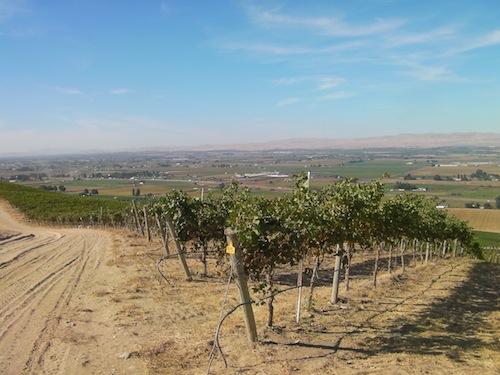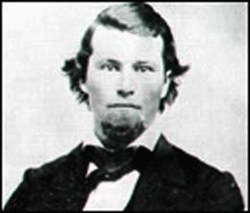
SUNNYSIDE, Wash. – History runs deep here at the top of the Yakima Valley.
A 1,300-foot-high ridge is the valley’s most prominent feature – and also one of its warmest regions. The hill is known as Snipes Mountain, named for a young man named Ben Snipes who rode into the valley in the 1850s and saw the potential for raising cattle.

Snipes, born in North Carolina, came to the Northwest via Iowa, where his family had migrated. He had caught gold fever by reports of the California gold rush. By the time he arrived, most of the gold had been spoken for, so he headed north on news of gold strikes on British Columbia’s Fraser River.
But instead of chasing gold, Snipes saw the opportunity to feed the men who were mining and panning by raising cattle and driving his herds north. He settled in The Dalles, Ore., where his older brother had moved. Hearing rumors of a valley to the north, he explored the Washington side of the Columbia River and came upon the Yakima Valley.
Through the years, Snipes built an empire that included 125,000 heads of cattle, mostly grazing around what now is the city of Sunnyside near Snipes Mountain. He later got into banking in Ellensburg and Roslyn and owned vast amounts of real estate in Seattle.
Little would be known of Snipes if not for Roscoe Sheller, an author who lived in Sunnyside and met the elder Snipes when he was a boy. His book Ben Snipes: Northwest Cattle King is a moving biography of Snipes and the early modern history of the Yakima Valley.
Book describes Washington wine country before vines
One fascinating aspect of Sheller’s book – published in 1957 – is that he describes Snipes’ treks across what are now some of the most famous regions in Washington wine country, including Snipes Mountain, Cold Creek, the Wahluke Slope and the Frenchman Hills – all more than a century before grape seeds and cuttings went into the soil. Sheller also writes about Snipes’ ventures into British Columbia’s Okanagan Valley, where he occasionally wintered cattle to get them to the Fraser River market earlier in the spring.
Ben Snipes’ name can be found elsewhere in the region. For example, Snipes Canyon Ranch Vineyards is in Prosser, and Snipes Creek is near the community of Whitstran near Prosser. Willow Crest Winery in Prosser once was located on Snipes Road north of town and uses grapes from Snipes Gap Vineyard. Snipes Pump Road is on the south side of Snipes Mountain. And Snipes Mountain Brewery is near Sunnyside.
In The Dalles, where Snipes lived during the winters and where he raised his family, there is a Snipes Street. And Ben Snipes’ home in The Dalles, built in 1867, is on the National Registry of Historic Places. Snipes is buried in The Dalles.
Newhouse connection to Snipes Mountain
[youtube id=”6fmjSy0qGEQ” width=”620″ height=”360″]
Todd Newhouse, who manages Upland Vineyards on Snipes Mountain, has a strong connection to the region’s history. His family arrived in 1911 – a half-decade after Snipes died – and farmed crops and cattle. The Newhouses even opened the Yakima Valley’s first dairy, which continues to operate today.
In 1914, a Canadian ex-patriate named William Bridgman planted table grapes on Harrison Hill, which is part of the same land formation as Snipes Mountain. Three years later, he planted wine grapes on Snipes. In the early 1970s, Todd Newhouse’s grandfather purchased the vineyard from Bridgman’s nephew and has since expanded it from about 100 acres of vines to more than 700. The family also farms tree fruits and juice grapes.
This winter, geologist and researcher Kevin Pogue of Whitman College in Walla Walla revealed data from his long-running study of Washington wine country, which showed the top of Snipes Mountain was the warmest area of the vast, 11-million-acre Columbia Valley.
That makes sense to Newhouse, who has worked in the family vineyard since the 1980s.
“I think we get a little less rainfall here than the rest of the valley,” Newhouse said atop Snipes Mountain. The rain pattern seems to follow the Horse Heavens a little bit or follow along the Rattlesnakes. We tend to miss a lot of those major clouds here on Snipes.”
Snipes Mountain was approved by the federal government as an American Viticultural Area in early 2009. At the time, some critics said the new AVA was not distinctive enough to be set apart from the rest of the Yakima Valley. However, its history as the cradle of the Washington wine industry and Pogue’s subsequent research showing how much warmer it is than the surrounding valley floor have helped to propel Snipes Mountain’s reputation as a small but important wine region.

Leave a Reply